There’s confusion about whether a meeting between Facebook founder Mark Zuckerberg and the European Union’s parliament — which is due to take place next Tuesday — will go ahead as planned or not.
The meeting was confirmed by the EU parliament’s president this week, and is the latest stop on Zuckerberg’s contrition tour, following the Cambridge Analytics data misuse story that blew up into a major public scandal in mid March.
However the discussion with MEPs that Facebook agreed to was due to take place behind closed doors. A private format that’s not only ripe with irony but was also unpalatable to a large number of MEPs. It even drew criticism from some in the EU’s unelected executive body, the European Commission, which further angered parliamentarians.
Now, as the FT reports, MEPs appear to have forced the parliament’s president, Antonio Tajani, to agree to livestreaming the event.
Guy Verhofstadt — the leader of the Alliance of Liberals and Democrats group of MEPs, who had said he would boycott the meeting if it took place in private — has also tweeted that a majority of the parliament’s groups have pushed for the event to be streamed online.
And a Green Group MEP, Sven Giegold, who posted an online petition calling for the meeting not to be held in secret — has also tweeted that there is now a majority among the groups wanting to change the format. At the time of writing Giegold’s petition has garnered more than 25,000 signatures.
MEP Claude Moraes, chair of the EU parliament’s Civil Liberties, Justice and Home Affairs (LIBE) committee — and one of the handful of parliamentarians set to question Zuckerberg (assuming the meeting goes ahead as planned) — told TechCrunch this morning that there were efforts afoot among political group leaders to try to open up the format. Though any changes would clearly depend on Facebook agreeing to them.
After speaking to Moraes, we asked Facebook to confirm whether it’s open to Zuckerberg’s meeting being streamed online — say, via a Facebook Live. Seven hours laters we’re still waiting for a response, including to a follow up email asking if it will accept the majority decision among MEPs for the hearing to be livestreamed.
The Libe committee had been pushing for a fully open hearing with the Facebook founder — a format which would also have meant it being open to members of the public. But that was before a small majority of the parliament’s political groups accepted the council of presidents’ (COP) decision on a closed meeting.
Although now that decision looks to have been rowed back, with a majority of the groups pushing the president to agree to the event being streamed — putting the ball back in Facebook’s court to accept the new format.
Of course democracy can be a messy process at times, something Zuckerberg surely has a pretty sharp appreciation of these days. And if the Facebook founder pulls out of meeting simply because a majority of MEPs have voted to do the equivalent of ‘Facebook Live’ the hearing, well, it’s hard to see a way for the company to salvage any face at all.
Zuckerberg has agreed to be interviewed on stage at the VivaTech conference in Paris next Thursday, and is scheduled to have lunch with French president Emmanuel Macron the same week. So pivoting to a last minute snub of the EU parliament would be a pretty high stakes game for the company to play. (Though it’s continued to deny a UK parliamentary committee any facetime with Zuckerberg for months now.)
The EU Facebook agenda
The substance of the meeting between Zuckerberg and the EU parliament — should it go ahead — will include discussion about Facebook’s impact on election processes. That was the only substance detail flagged by Tajani in the statement on Wednesday when he confirmed Zuckerberg had accepted the invitation to talk to representatives of the EU’s 500 million citizens.
Moraes says he also intends to ask Zuckerberg wider questions — relating to how its business model impacts people’s privacy. And his hope is this discussion could help unblock negotiations around an update to the EU’s rules around online tracking technologies and the privacy of digital communications.
“One of the key things is that [Zuckerberg] gets a particular flavor of the genuine concern — not just about what Facebook is doing, but potentially other tech companies — on the interference in elections. Because I think that is a genuine, big, sort of tech vs real life and politics concern,” he says, discussing the questions he wants to ask.
“And the fact is he’s not going to go before the House of Commons. He’s not going to go before the Bundestag. And he needs to answer this question about Cambridge Analytica — in a little bit more depth, if possible, than we even saw in Congress. Because he needs to get straight from us the deepest concerns about that.
“And also this issue of processing for algorithmic targeting, and for political manipulation — some in depth questions on this.
“And we need to go more in depth and more carefully about what safeguards there are — and what he’s prepared to do beyond those safeguards.
“We’re aware of how poor US data protection law is. We know that GDPR is coming in but it doesn’t impact on the Facebook business model that much. It does a little bit but not sufficiently — I mean ePrivacy probably far more — so we need to get to a point where we understand what Facebook is willing to change about the way it’s been behaving up til now.
“And we have a real locus there — which is we have more Facebook users, and we have the clout as well because we have potential legislation, and we have regulation beyond that too. So I think for those reasons he needs to answer.”
“The other things that go beyond the obvious Cambridge Analytica questions and the impact on elections, are the consequences of the business model, data-driven advertising, and how that’s going to work, and there we need to go much more in depth,” he continues.
“Facebook on the one hand, it’s complying with GDPR [the EU’s incoming General Data Protection Regulation] which is fine — but we need to think about what the further protections are. So for example, how justified we are with the ePrivacy Regulation, for example, and its elements, and I think that’s quite important.
“I think he needs to talk to us about that. Because that legislation at the moment it’s seen as controversial, it’s blocked at the moment, but clearly would have more relevance to the problems that are currently being created.”
Negotiations between the EU parliament and the European Council to update the ePrivacy Directive — which governs the use of personal telecoms data and also regulates tracking cookies — and replace it with a regulation that harmonizes the rules with the incoming GDPR and expands the remit to include Internet companies and cover both content and metadata of digital comms are effectively stalled for now, as EU Member States are still trying to reach agreement. The directive was last updated in 2009.
“When the Cambridge Analytica case happened, I was slightly concerned about people thinking GDPR is the panacea to this — it’s not,” argues Moraes. “It only affects Facebook’s business model a little bit. ePrivacy goes far more in depth — into data-driven advertising, personal comms and privacy.
“That tool was there because people were aware that this kind of thing can happen. But because of that the Privacy directive will be seen as controversial but I think people now need to look at it carefully and say look at the problems created in the Facebook situation — and not just Facebook — and then analyze whether ePrivacy has got merits. I think that’s quite an important discussion to happen.”
While Moraes believes Facebook-Cambridge Analytica could help unblock the log jam around ePrivacy, as the scandal makes some of the risks clear and underlines what’s at stake for politicians and democracies, he concedes there are still challenging barriers to getting the right legislation in place — given the fine-grained layers of complexity involved with imposing checks and balances on what are also poorly understood technologies outside their specific industry niches.
“This Facebook situation has happened when ePrivacy is more or less blocked because its proportionality is an issue. But the essence of it — which is all the problems that happened with the Facebook case, the Cambridge Analytica case, and data-driven advertising business model — that needs checks and balances… So we need to now just review the ePrivacy situation and I think it’s better that everyone opens this discussion up a bit.
“ePrivacy, future legislation on artificial intelligence, all of which is in our committee, it will challenge people because sometimes they just won’t want to look at it. And it speaks to parliamentarians without technical knowledge which is another issue in Western countries… But these are all wider issues about the understanding of these files which are going to come up.
“This is the discussion we need to have now. We need to get that discussion right. And I think Facebook and other big companies are aware that we are legislating in these areas — and we’re legislating for more than one countries and we have the economies of scale — we have the user base, which is bigger than the US… and we have the innovoation base, and I think those companies are aware of that.”
Moraes also points out that US lawmakers raised the difference between the EU and US data protection regimes with Zuckerberg last month — arguing there’s a growing awareness that US law in this area “desperately needs to be modernized”.
So he sees an opportunity for EU regulators to press on their counterparts over the pond.
“We have international agreements that just aren’t going to work in the future and they’re the basis of a lot of economic activity, so it is becoming critical… So the Facebook debate should, if it’s pushed in the correct direction, give us a better handle on ePrivacy, on modernizing data protection standards in the US in particular. And modernizing safeguards for consumers,” he argues.
“Our parliaments across Europe are still filled with people who don’t have tech backgrounds and knowledge but we need to ensure that we get out of this mindset and start understanding exactly what the implications here are of these cases and what the opportunities are.”
In the short term, discussions are also continuing for a full meeting between the Libe committee and Facebook.
Though that’s unlikely to be Zuckerberg himself. Moraes says the committee is “aiming for Sheryl Sandberg”, though he says other names have been suggested. No firm date has been conformed yet either — he’ll only say he “hopes it will take place as soon as possible”.
Threats are not on the agenda though. Moraes is unimpressed with the strategy the DCMS committee has pursued in trying (and so far failing) to get Zuckerberg to testify in front of the UK parliament, arguing threats of a summons were counterproductive. Libe is clearly playing a longer game.
“Threatening him with a summons in UK law really was not the best approach. Because it would have been extremely important to have him in London. But I just don’t see why he would do that. And I’m sure there’s an element of him understanding that the European Union and parliament in particular is a better forum,” he suggests.
“We have more Facebook users than the US, we have the regulatory framework that is significant to Facebook — the UK is simply implementing GDPR and following Brexit it will have an adequacy agreement with the EU so I think there’s an understanding in Facebook where the regulation, the legislation and the audience is.”
“I think the quaint ways of the British House of Commons need to be thought through,” he adds. “Because I really don’t think that would have engendered much enthusiasm in [Zuckerberg] to come and really interact with the House of Commons which would have been a very positive thing. Particularly on the specifics of Cambridge Analytics, given that that company is in the UK. So that locus was quite important, but the approach… was not positive at all.”

from Social – TechCrunch https://ift.tt/eA8V8J EU parliament pushes for Zuckerberg hearing to be live streamed Natasha Lomas https://ift.tt/2rTkDTa
via
IFTTT





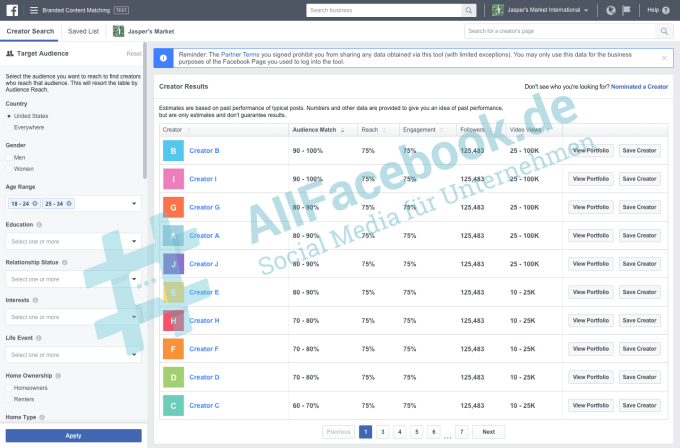
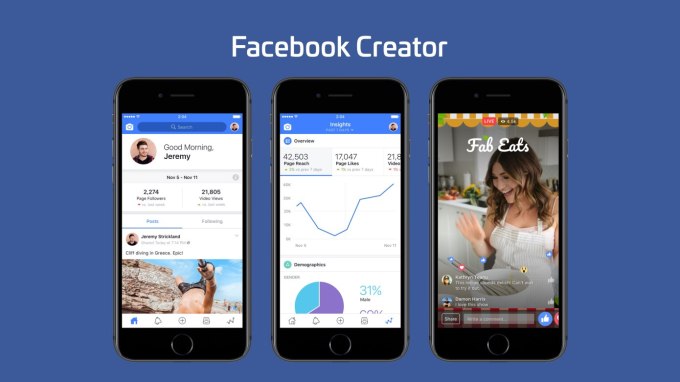
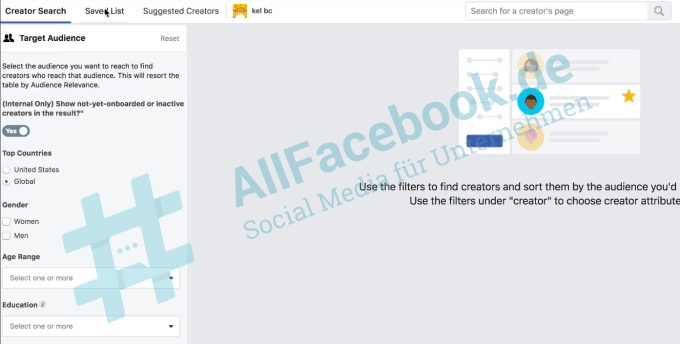

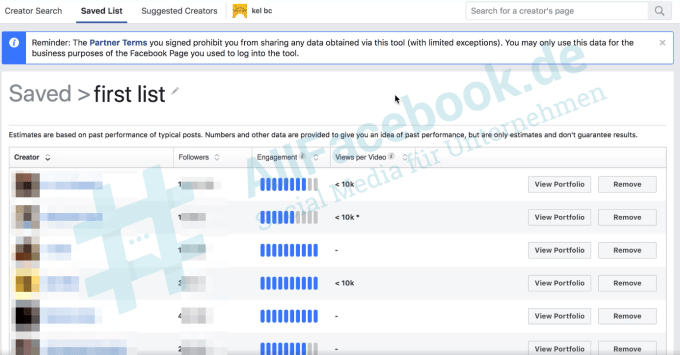
 And really, Instagram is where all these influencers spend their time and share their content. Though Facebook owns it, it says it’s not showing Instagram influencers in the tool at the moment. Adding them in, the same way advertisers can push ads to Facebook and Instagram from one interface, would make the search engine much more powerful.
And really, Instagram is where all these influencers spend their time and share their content. Though Facebook owns it, it says it’s not showing Instagram influencers in the tool at the moment. Adding them in, the same way advertisers can push ads to Facebook and Instagram from one interface, would make the search engine much more powerful.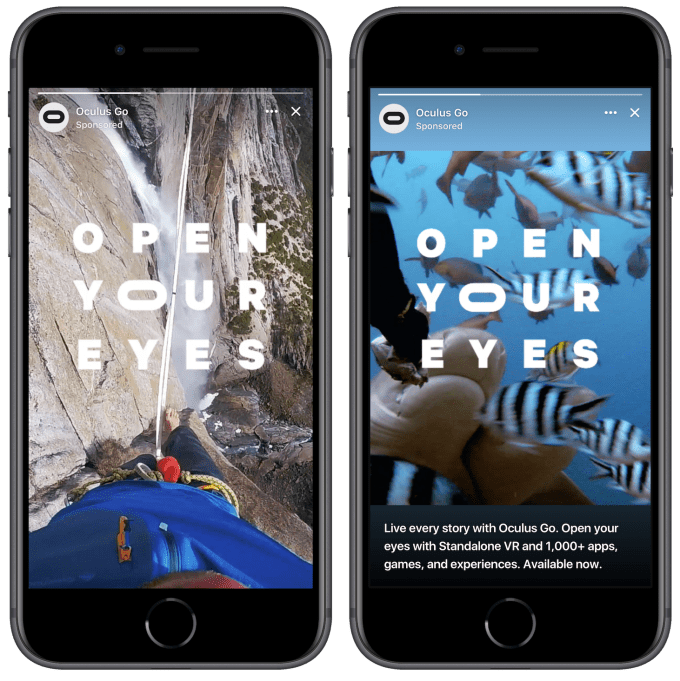


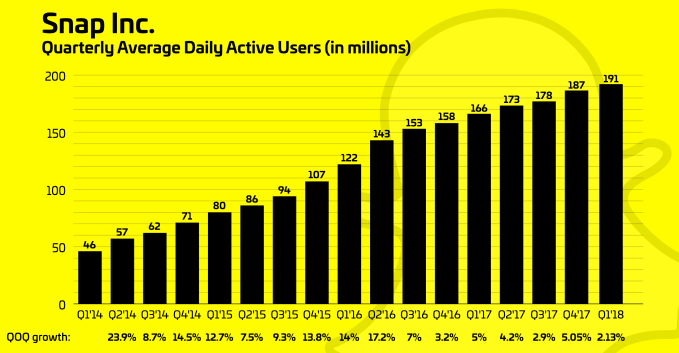
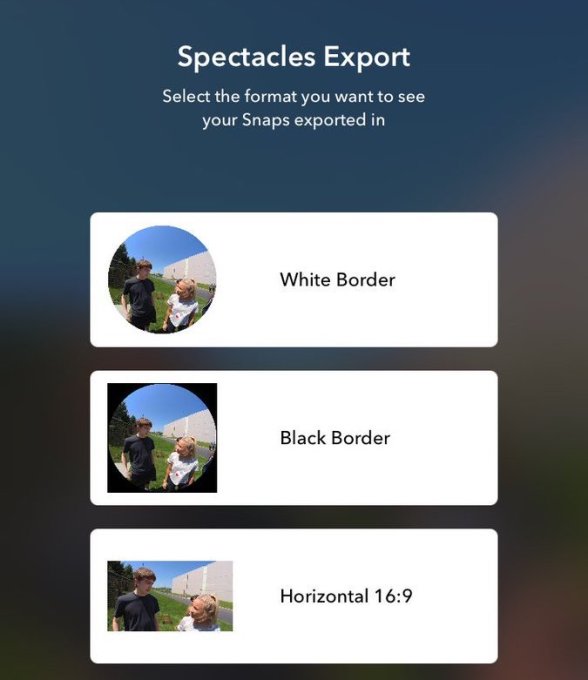 Luckily, Snapchat has started beta testing new export formats for Spectacles through the beta version of its app. This lets you choose a black border instead of a white one, but importantly, also a horizontal 16:9 rectangular format that would fit well on YouTube and other traditional video players. The test was first spotted by
Luckily, Snapchat has started beta testing new export formats for Spectacles through the beta version of its app. This lets you choose a black border instead of a white one, but importantly, also a horizontal 16:9 rectangular format that would fit well on YouTube and other traditional video players. The test was first spotted by 
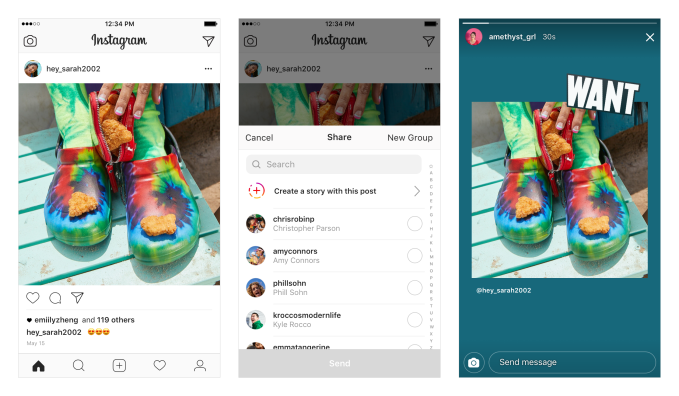


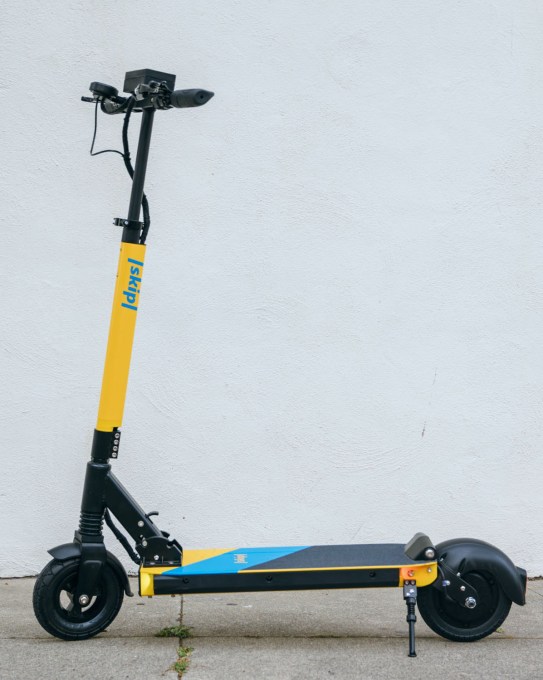 “We think the vehicle matters” Skip and former Boosted co-founder/CEO Sanjay Dastoor tells me. “It’s not the same as rideshare where two or more companies are all using the same car. There’s a big spectrum of quality in the base vehicles. A lot of these companies are buying off the shelf vehicles
“We think the vehicle matters” Skip and former Boosted co-founder/CEO Sanjay Dastoor tells me. “It’s not the same as rideshare where two or more companies are all using the same car. There’s a big spectrum of quality in the base vehicles. A lot of these companies are buying off the shelf vehicles 





 Ehrhardt also noticed that recruitment and personal development are two big obstacles for companies trying to develop and express their own culture. Founders suddenly go from being chief product officer to hiring people to take over various roles at the company, requiring a totally different set of skills.
Ehrhardt also noticed that recruitment and personal development are two big obstacles for companies trying to develop and express their own culture. Founders suddenly go from being chief product officer to hiring people to take over various roles at the company, requiring a totally different set of skills.











